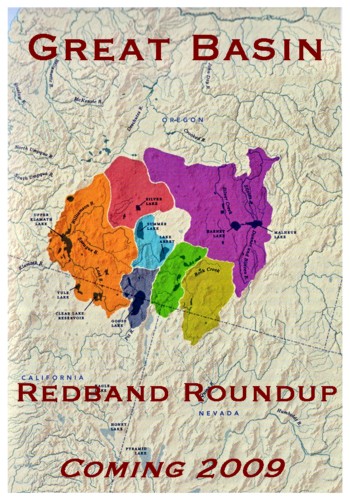Water Serves Many Masters in the Klamath Basin
 An excellent book about water issues in the Klamath River watershed - Balancing Water: Restoring the Klamath Basin describes the challenges facing an complex ecosystem in Southern Oregon with beautiful imagery and writing.
An excellent book about water issues in the Klamath River watershed - Balancing Water: Restoring the Klamath Basin describes the challenges facing an complex ecosystem in Southern Oregon with beautiful imagery and writing.
Redband Habitat
Redband trout can be found in a variety of habitats depending on the age of the fish. Adults are generally found in areas of abundant cover associated with deep pools, dead trees, undercut banks, and overhanging vegetation. Juveniles are often found in shallow stream habitats. The redband trout is a spring (March through June) spawner with eggs usually hatching in four to seven weeks.
Klamath Basin Redband
The subspecies of Redband - Upper Klammath Lake Redband is found in one isolated Klammath Basin relic stream in Northeastern Siskiyiou County and 4 creeks in Northwestern Modoc County. .... So I went to the premier expert Dr. Robert Behnke and he confirmed my question that Upper Klammath Lake Redbands do exist in CA citing his writings in AFS series as recently as 2007 actually listing the waters UKL Redbands found in CA! So I thought I would share the news with you. Hopefully DFG will add this sub-species of Redbands to the list of qualifying Native Trout for the CHTC. This brings the total Native Trout found in CA to 13 if you count Steelhead. Pretty exciting news no matter how you look at it.
Ned Morris via personal communication
The Klamath Basin in southern Oregon (and parts of Northern California) represents a truly unique fishery. First, healthy populations of native redband trout are present. Secondly, these redband inhabitat some of the larger rivers as well as are adapted to adjacent lakes. And finally, the lake-adapted Klamath redband grow large as a result of abundant food sources (e.g. bait fish and aquatic insects) found in both river and lake habitat.
Physical Description
The photograph above is a typical lake-adapted redband from a population in Upper Klamath Lake. The main physical characteristics (besides its large size) are no visible parr marks, a very subdued pink color along the lateral line, and a small (low denisty) amount of spotting. As commented by Behnke, "populations ... found in Upper Klamath Lake and the adjacent Williamson River bear a striking outward resemblance to O.m.irideus steelhead: a stout body, steely blue coloration, a bullet-shaped head, and darkish pectoral, pelvic, anal, and caudal fins."
Spawning Migrations
Before spawning in winter and spring, the lake resident redbands will migrate up into the Wood and Williamson Rivers. Not surprisingly, these migration runs are monitored closely by anglers hoping to hook into a monster redband with some pushing 3 feet in length and weighing up to 20 pounds. The offspring from these spawners will reside in both rivers for protection from predators and eventually migrate to the lake where they will feed on a mix of food sources.
More Great Basin Redbands Coming Soon


